
31 May Things You Need to Know Before Climbing Kilimanjaro
13 THINGS YOU NEED TO KNOW BEFORE CLIMBING KILIMANJARO:
Before climbing Mount Kilimanjaro, you should be aware of these 13 crucial factors to assist you emotionally, physically, and logistically preparing for a safe and successful journey:
1. COME FOR THE MOUNTAIN. STAY FOR THE LIONS:
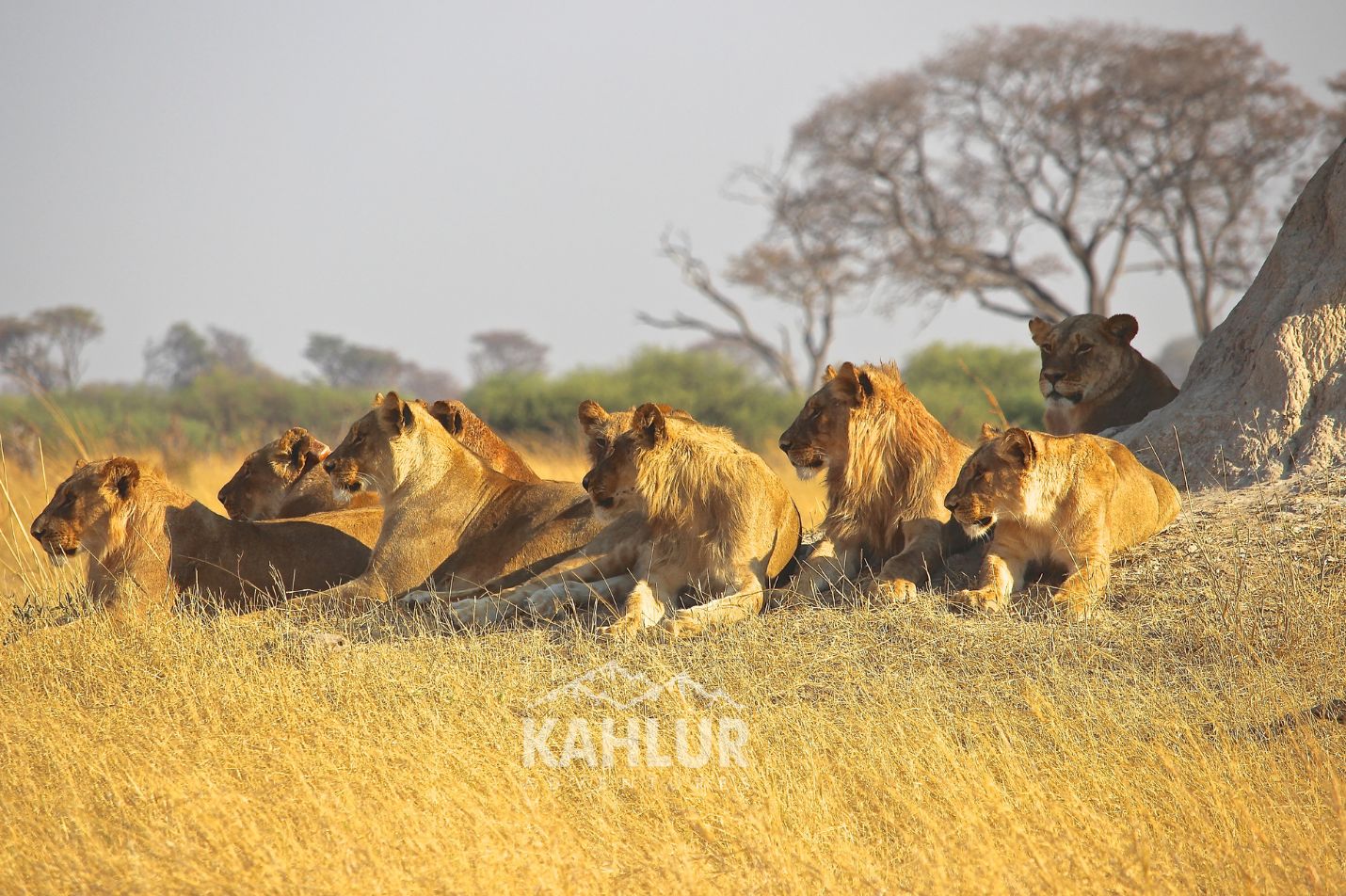
Avoid taking a plane home immediately after conquering Kilimanjaro! Not spending some time in Tanzania’s well-known national parks would be a pity. Tanzania is regarded as the top safari destination in the world. The nation, which is home to the Serengeti National Park and Ngorongoro Crater, two UNESCO World Heritage Sites, draws millions of tourists who come to witness the Big Five (elephant, leopard, lion, buffalo, and rhino), among other animals. Therefore, think about prolonging your vacation before hurriedly booking your return trip. With lodging in lodges, permanent tented camps, or upscale hotels, we provide a variety of safari itineraries to fit your preferences and needs, ranging from one-day excursions to multi-day itineraries. In sturdy, four-wheel drive Land Cruisers, an experienced guide will take you to the animals locations. Because our cars have pop-up tops, you may see wild creatures up close and plainly without any hindrances in their natural environment. If you’re lucky, you could see a herd of wildebeest charge over the broad plains, a pride of lions bring down a buffalo or a cheetah hunt a gazelle. You will always remember these views.
02. ALL THE HEAVY LIFTING IS DONE BY A SUPPORT STAFF:

The amazing support staff that takes care of all the physical and mental labour, enabling climbers to concentrate on the difficulty of climbing and altitude adjustment, is one of the hallmarks of a Mount Kilimanjaro trip. A crew that usually consists of porters, guides, chefs, and occasionally assistant guides or summit support personnel supports each journey. You just carry a daypack with necessities like water, snacks, and layers; porters carry the majority of the equipment, including tents, food supplies, cooking equipment, and your main duffel bag, which may weigh up to 15 kg. Every day, the cook makes hot, energetic meals, sometimes in difficult circumstances. Guides set the pace, keep an eye on your health, and offer leadership and inspiration. People without prior mountaineering or backpacking experience can now climb Kilimanjaro thanks to this system, but it’s crucial to pick an operator that treats its employees fairly. Seek out those connected to the Kilimanjaro Porters Assistance Project (KPAP) to guarantee fair pay, appropriate equipment, and respectable working conditions for the team that makes your summit possible.
03. YOU WILL EAT WELL ON THE MOUNTAIN:
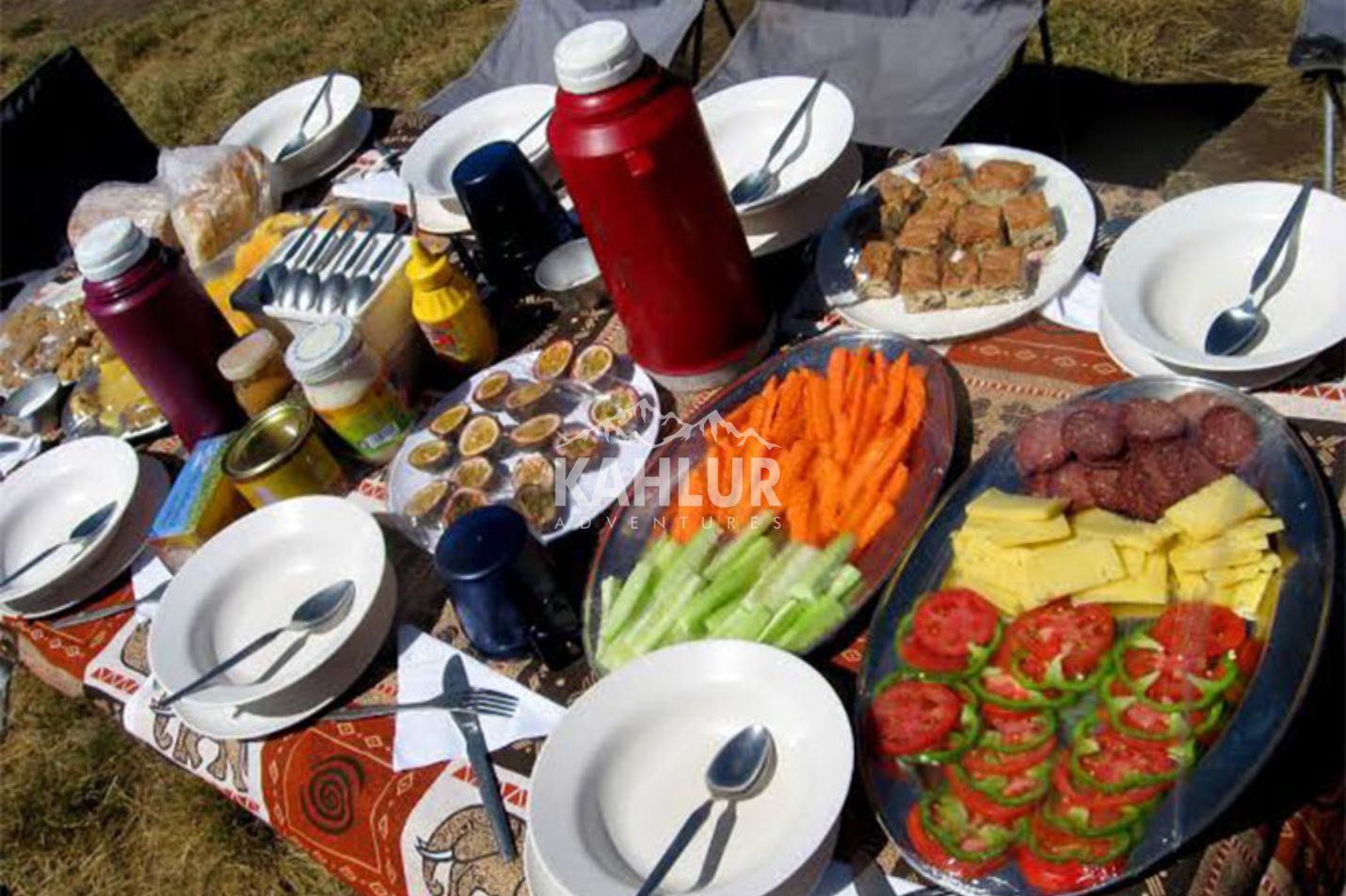
Because Kahlur Adventures is dedicated to offering wholesome, substantial, and freshly made meals that prepare your body for the arduous walk ahead, you will eat remarkably well during your Mount Kilimanjaro trip. To get you going for the morning trek, start each day with a hot breakfast consisting of porridge, eggs, toast, fresh fruit, and tea or coffee. On the path or in camp, lunch might be a hot dish of pasta, rice, or potatoes accompanied by protein and veggies. A filling meal of soup, meat or vegetarian stews, and carbohydrates to refuel is served after the hike, and you are greeted with afternoon tea and snacks upon returning to camp. The mountain cooks at Kahlur are adept at preparing meals in difficult circumstances and are considerate of dietary requirements, catering to vegetarian, vegan, gluten-free, and other special requirements. These thoughtfully prepared meals provide more than just sustenance; they also serve as a morale enhancer, providing you with cosiness, warmth, and a feeling of regularity as you climb toward the peak.
04. KILIMANJARO IS NOT A TECHNICAL CLIMB. IT’S A HIKE:
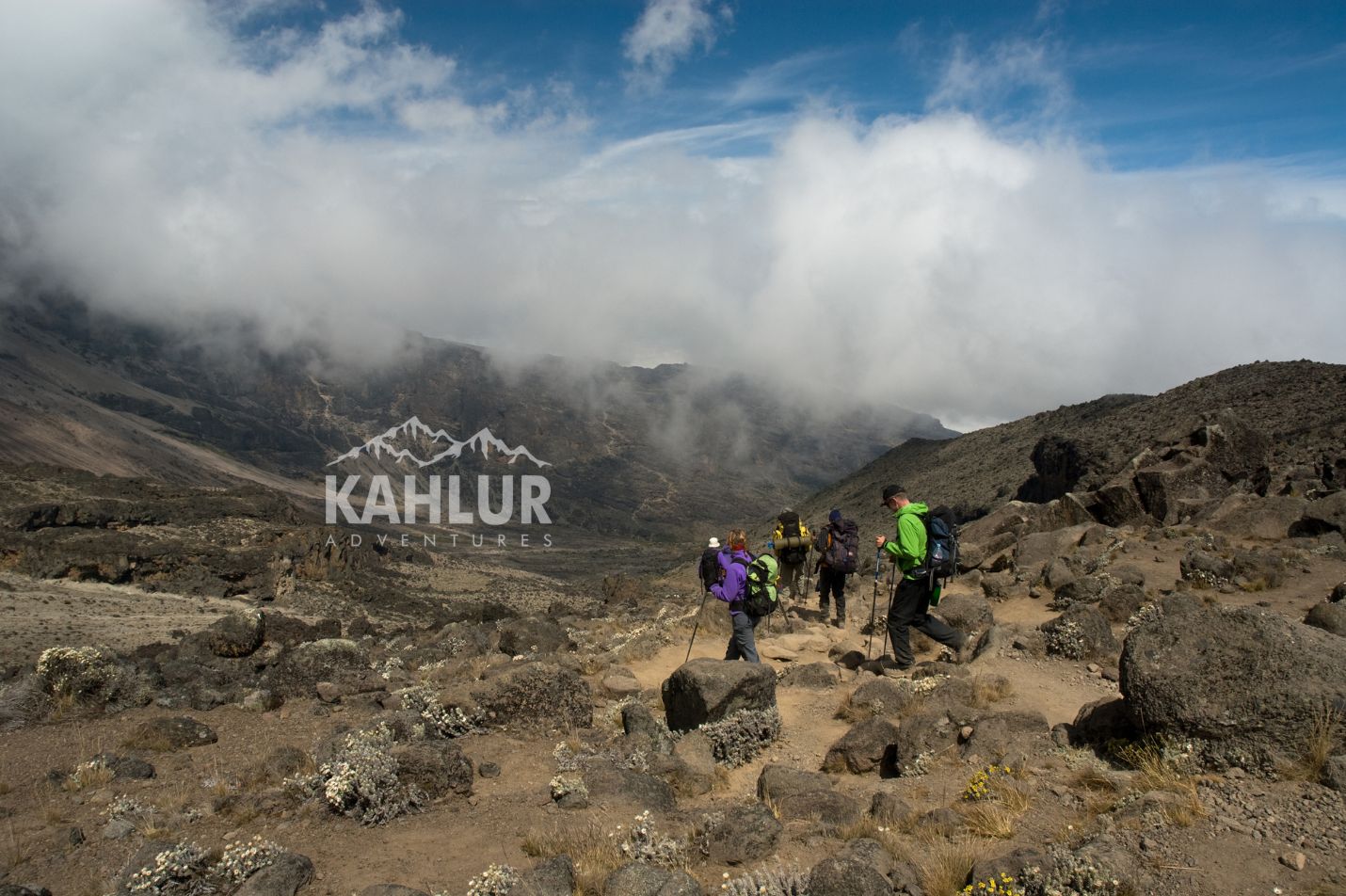
Frequently misinterpreted as a technical ascent, Mount Kilimanjaro is a high-altitude hike rather than a mountaineering trip. Kilimanjaro is categorized as a non-technical ascent, which means that anybody in reasonable physical condition may try it without any prior climbing experience, unlike summits that call for ropes, ice axes, crampons, or climbing abilities. Although some of the routes—such as the Barranco Wall or the last push to Uhuru Peak—are rocky or steep, they are mostly well-traveled paths and entail walking rather than true climbing. However, the height, chilly temperatures, and lengthy daily walking distances make the climb extremely taxing. Mental toughness, appropriate acclimatization, and endurance are significantly more important for success than technical proficiency. Although many novice hikers make it to the top, underestimating the difficulty since it’s just a hike might result in altitude sickness or summit failure. Kilimanjaro is referred to as Everyone Everest since it is a task that laypeople may easily perform. Individuals from all walks of life come here to test their mettle, as seen by the demographics of the more than 30,000 individuals who tackle the mountain each year. Everyone has a place on this mountain, regardless of age, level of expertise, or level of inexperience.
05. ACUTE MOUNTAIN SICKNESS IS DANGEROUS:

At higher elevations, the air is thinner. This is the cause of acute mountain sickness (AMS), a prevalent ailment among climbers. The main cause of people’s failure to reach Mount Kilimanjaro peak is AMS. Furthermore, severe forms of AMS have the potential to be lethal, even if moderate versions are expected when climbing Kilimanjaro. When the body adjusts to the reduced oxygen levels at high elevations, AMS develops. Acclimatization is the process that produces certain biological reactions to counteract the oxygen shortage. More red blood cells that deliver oxygen are created. The rate of respiration is elevated. AMS symptoms start to show up when these measures are insufficient to make up for the decreased oxygen in the atmosphere. Typically, the symptoms begin with a little headache, nausea, and mild exhaustion. Before the body is retested at a higher height, it eventually goes away as the body adjusts to the present level. This type of recovery indicates that the body is getting over the oxygen shortage, so there’s no reason to be concerned. In actuality, some individuals who acclimate rapidly won’t have any symptoms at all. To keep an eye on our clients; health, our staff performs health examinations twice a day. A review of pulse rates, an oxygen saturation level, and a symptom assessment make up the health checks. The purpose of recording the data is to assess changes over time. You will be taken down the mountain for your safety if the guides decide it is too dangerous to go on. On every ascent, we have bottled oxygen and a portable stretcher with us, and in the event of a medical emergency, we can arrange for a helicopter or foot evacuation.
06. AFRICA MAY BE WARM, BUT THE MOUNTAIN IS COLD:

Kilimanjaro proximity to the equator does not necessarily translate into intense heat. It’s not. As soon as you get higher, the temperature almost instantly lowers. This implies that everyone has to wear clothes made to keep them warm throughout the winter months. As long as the sun is visible during the day, it is frequently warm. Therefore, wearing trekking trousers and a single base layer on top will likely make you feel rather comfortable on day walks. Sometimes a hard shell jacket in the event of a high wind, or a soft shell jacket when clouds roll in. Things are different at night. The chill arrives as the sun sets. Even on the first night, wearing a knit cap and down jacket is not unusual. There will very likely be evenings when the temperature drops below freezing. When you discover that ice developed on your tent throughout the night, you will know this. This is a non-issue as long as you are properly outfitted and equipped.
07. IT’S A GOOD THING THAT THERE IS NO ELECTRICITY AND RESTRICTED WIFI:
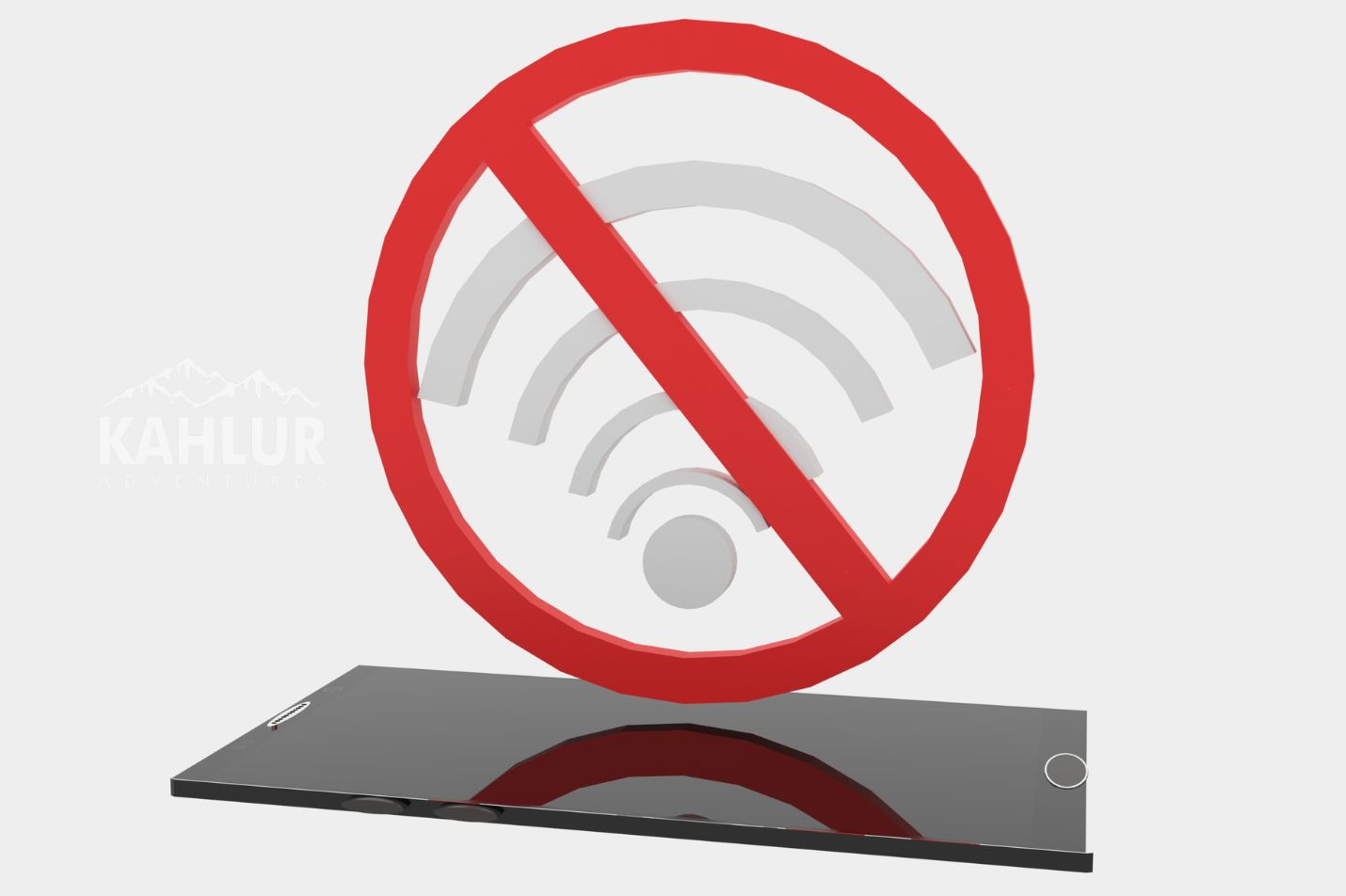
WiFi on the mountain is spotty. The cell service is quite inconsistent. There might not be many opportunities to phone, text, or email during the day. Therefore, you shouldn’t rely on it. Overcast weather might weaken the transmission. Ask the guides where and when you might be able to obtain a signal if you want to use your phone. Or just keep an eye out for local personnel using their phones. Kilimanjaro is similarly without power. Make plans appropriately because there is nowhere to charge smartphones or camera batteries. Make sure you have adequate camera batteries for the whole ascent. For recharging phones, a portable external battery pack is ideal. We have found solar chargers to be unstable and typically ineffective. We urge you to take advantage of this chance to get away from the hectic city and business life and re-establish a connection with nature. It’s fascinating how being in nature and experiencing stillness can arouse profound reflection and self- realizations that could have otherwise been dormant. Think about the things that are significant in your life during this time. Consider if you should change your course or recommit to the one you are currently on. In this sense, climbing Kilimanjaro might change your life, just as it did for others.
08. SUMMIT NIGHT IS DIFFICULT, BUT IT IS POSSIBLE:

Short walks at a leisurely pace with gradual elevation gains are the norm for day hikes. These days, most seasoned hikers would describe their hikes as light and pleasurable rather than tough. On summit night, things are different. For practically everyone, it will be challenging. For several reasons, this last climb is not like the others. It begins with waking up at midnight. Thus, you didn’t receive a full night’s sleep last night. Put another way, you start at a disadvantage since you don’t get enough sleep. Second, it is dark since it is the middle of the night. You won’t have a clear view of your surroundings and your destination. You follow the lead set by your guides. Only a few steps ahead of you, a headlight lights up the way. You get discouraged by the amount of work needed when you see other headlights high above in the distance. On the way to the top, you enter the arctic biological zone, which is devoid of both vegetation and animals. As one might expect, it can be very cold in the Arctic. Additionally, because this last climb is done so early in the morning—long before sunrise—the temperature can drop below freezing with wind chill. You will be okay if you wear the right layers of clothes and accessories, even if this may seem intimidating. Along with a helmet, gloves, and gaiters, most individuals wear three layers on the bottom and four or five layers on top. It will take around six to seven hours to survive the cold and wind. As soon as the sun rises, it swiftly heats. There is a 4,000-foot elevation climb and a 9,000- foot fall. Ten to fourteen hours, or even more for some, may be needed for this. Right now, you may wish you were relaxing on your comfortable sofa at home. Don’t worry. You will succeed, inch by inch, step by step. Many claim that it is the most difficult thing they have ever done. However, the work needed is what makes it valuable. You should be proud of yourself for persevering through this adversity and reaching the summit of Kilimanjaro.
09. TOILETS ON THE CLIMB TO MOUNT KILIMANJARO:

Toilet facilities are poor and vary by route, operator, and camp when climbing Mount Kilimanjaro. There are permanent wooden or metal bathroom constructions—typically squat toilets—at lower elevations and major campsites like Machame, Shira, and Barafu. These structures are straightforward and practical, but excessive usage can make them unsanitary. The private toilets that Kahlur Adventures will supply are portable chemical toilets that are kept in little tents for increased hygiene and seclusion. These enhance the whole experience and are carried and maintained by the porters. The toilet tent is made up of a plastic commode covered by a tent the size and form of a phone booth. The toilet seat, cover, and water-based flushing system are all included with the commode. It is used in the same way as a typical toilet at home. The bowl is rinsed with water from a couple of hand pumps. However, as there are no official restrooms along the path between camps, climbers must adhere to the Leave No Trace philosophy, using natural cover and disposing of waste as needed. Because of the great altitude and scarcity of water for handwashing, climbers are recommended to pack enough toilet paper and hand sanitiser. Enhancing environmentally responsible waste management is becoming more and more important as tourism rises to preserve the delicate alpine ecosystem.
10. BE PREPARED TO SPEND AT LEAST SEVEN DAYS ON THE MOUNTAIN:
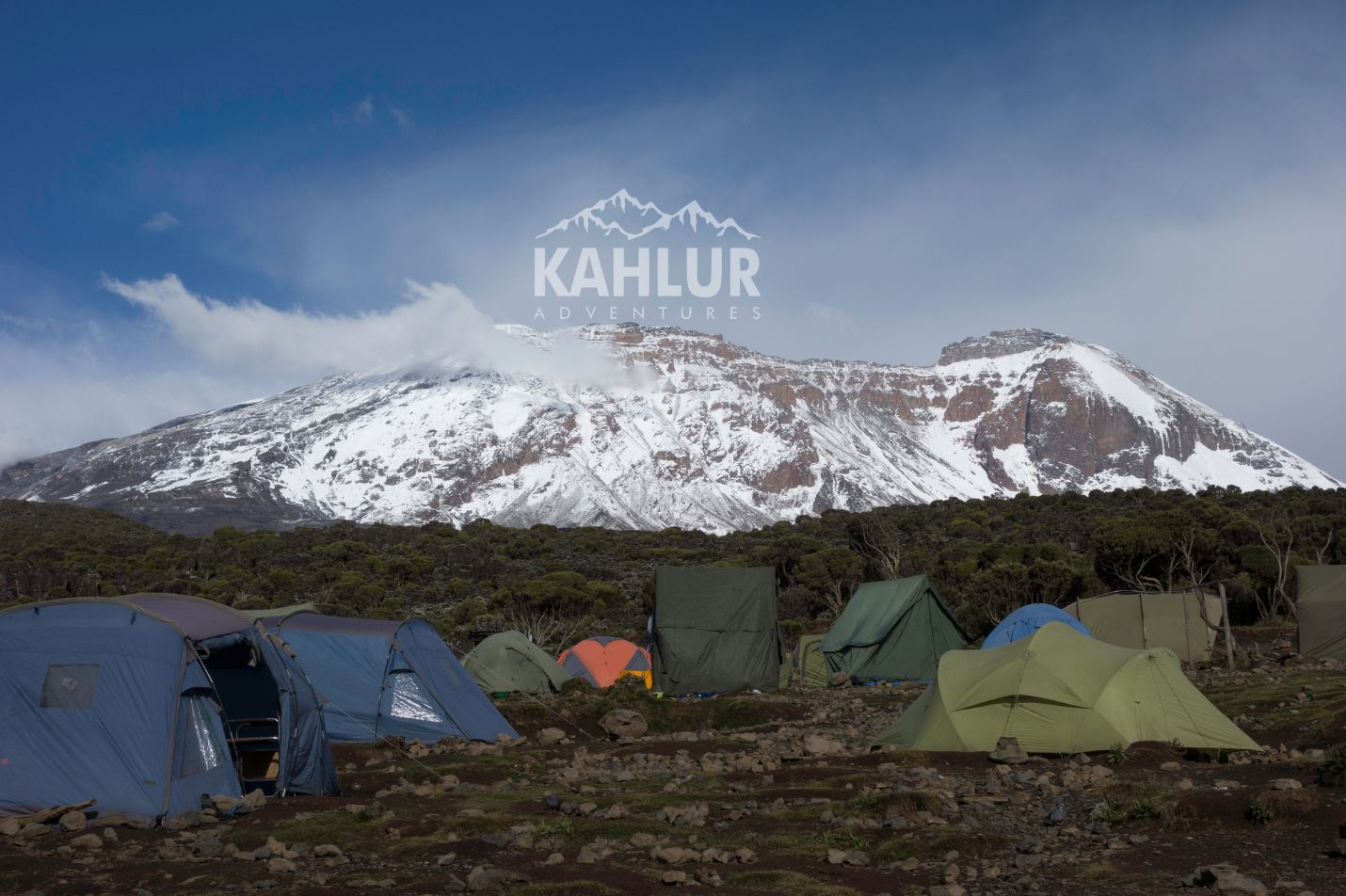
There are several ways to climb Kilimanjaro, but they all lead to the same destination: Uhuru Point, often known as the summit. However, we strongly advise scheduling trips that last seven to nine days. This applies to everyone, including those who are in their physical prime, highly experienced, and incredibly fit. The body acclimates more easily if you climb more slowly. Consequently, it is important to ascend gradually—enough to start the acclimatization process, but not so much as to overwhelm the body’s capacity for adaptation. It takes five days to go up and down the mountain’s shortest path. Examining the specifics reveals that the ascent from 6,000 feet to 19,341 feet takes only three and a half days. If you think it sounds hard, it is, which is why park officials say that just 27% of five-day itineraries are successful. Spending money, time, and effort just to get sick after a few days on the mountain is not worth it. Adding extra days to your climb is the most practical way to significantly boost your chances of reaching the top of Kilimanjaro, even if it may not be in everyone future. You’ll likely feel better, have more fun, and succeed.
11. MOUNT KILIMANJARO IS NOT TOO DIFFICULT TO REACH:

For a place so far away, Kilimanjaro is very accessible. Kilimanjaro International Airport (airport code JRO) is an international airport in Tanzania. The towns of Moshi and Arusha are close to the airport. The starting points for Kilimanjaro excursions are these two cities. These locations are home to almost all climbing and safari companies, who will utilize them to house their visitors both before and after their adventures. For the majority of our clients, we start our travels from Moshi. For individuals who are simply going on a safari, Arusha is utilized since it is closer to Tanzania northern wildlife reserves. After landing at Kilimanjaro Airport, it takes around forty minutes to drive to either Moshi or Arusha. Since you will be harassed by taxi drivers as soon as you leave the airport, taxis are easily accessible—possibly too accessible. However, for your convenience, Kahlur Adventures provides pick-up and drop-off services.
12. CLIMBING MT KILIMANJARO WILL BE EXPENSIVE:
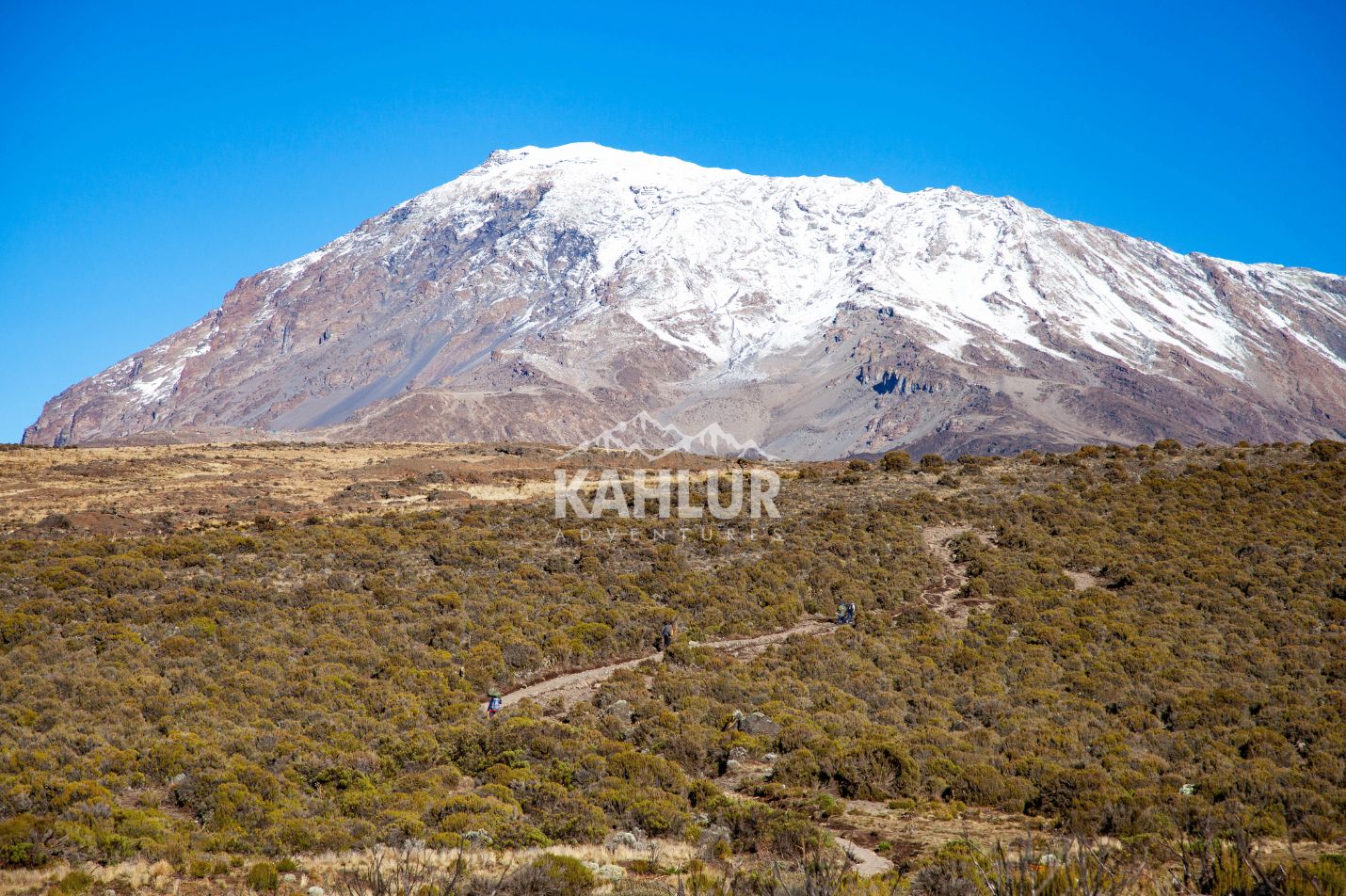
Kilimanjaro climbing is not inexpensive. Despite Tanzania status as a third-world nation, visitors must pay hefty fees to enter its national parks. In actuality, required park fees account for the majority of Kilimanjaro operators costs. Currently, park permits, additional fees, and government taxes total over $120 per person per night. When you notice high Kilimanjaro climb charges, know that these figures are determined by these expenses, over which the operator has no influence. Second, every Kilimanjaro expedition requires a significant amount of people, as we said in point three above (climbs are fully supported). Labour expenses account for a significant amount of overall costs. It’s a difficult task to climb the mountain every day. Our employees are a wonderful group of people who deserve to be treated fairly and are working hard to earn a living. Although there are less expensive operators, climbing with them carries certain hazards. Additionally, some luxury operators demand significantly higher prices, which we believe is superfluous. We are in a position to provide excellent service at a reasonable cost while maintaining a high level of safety. This explains why our customers are so enthusiastic about our business and recommend Kahlur Adventures to their friends and family for their own Kilimanjaro experiences.
13. Climb Kilimanjaro with Indian Mountaneering Company Kahlur
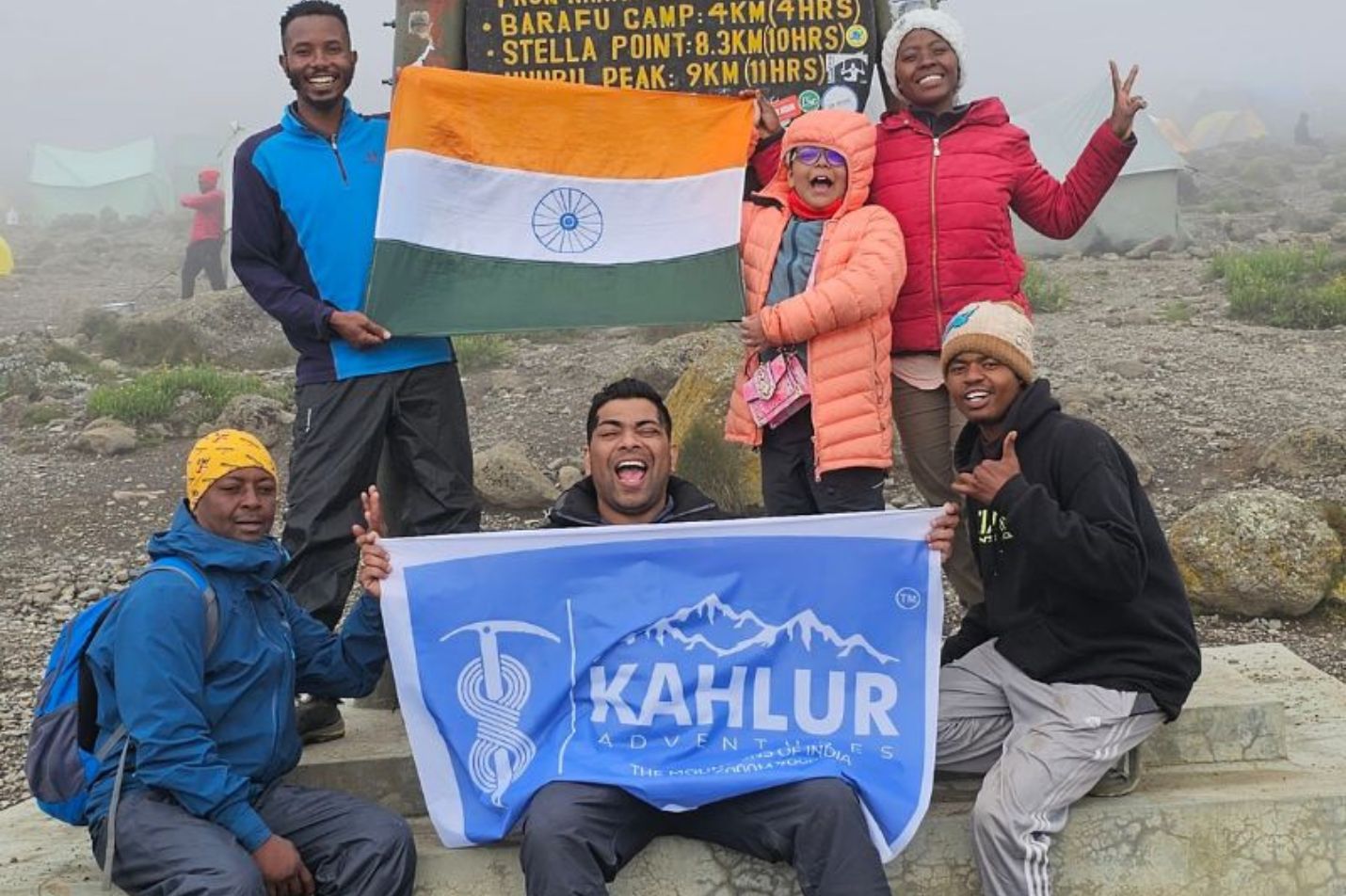
Kahlur Adventures India is a registered mountaineering company that offers fully guided expeditions to Kilimanjaro. More than 60 trekkers have successfully reached the Kilimanjaro summit with Kahlur Adventures India, including kids below 7 years old. Join our upcoming fixed departures to Kilimanjaro peak for a safe and exciting adventure. For booking and details, contact Kahlur Adventures India at +91 8588846600



No Comments